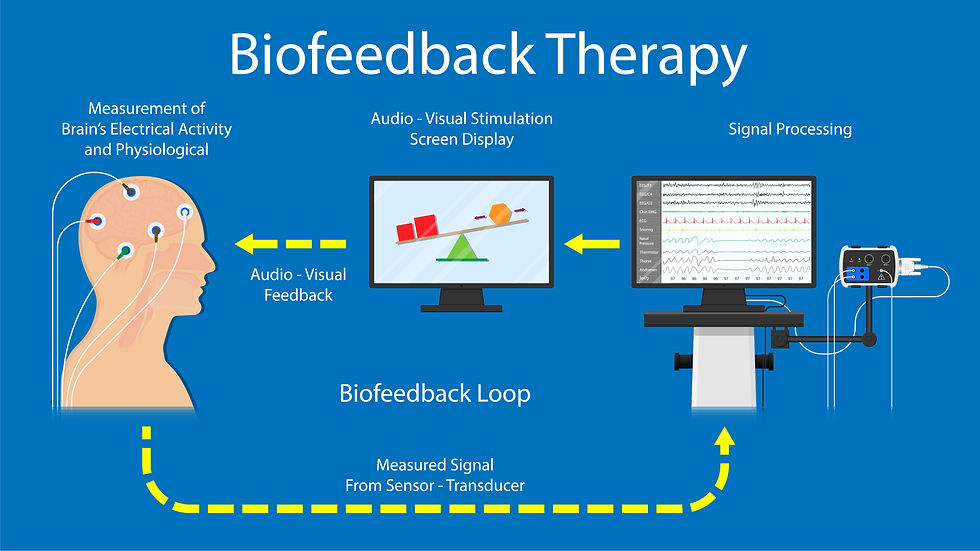Is Deep Breathing Really Good For You?
- Jin Lee

- May 29, 2020
- 4 min read
I attended a Zoom meeting the other day, and one of my colleagues expressed her concerns about returning to "normal life." Her worry was about going to work, restaurants, the gym, and traveling. She said, "I'm anxious about going outside like I used to and terrified of getting sick." Then the other colleague of mine provided comfort and said, "Just take a deep breath."

Just like this dialogue between my colleagues, have you felt anxious and heard people telling you, "Just take a deep breath"?
Some of you may feel better when you take a deep breath, while many of you may feel dizzy and light-headed. When you continue to take deep breaths, you may feel worse!
So why don't we feel better when we take a deep breath despite people tell each other to take a deep breath all the time?
The answer is in physiology - in-balanced oxygen and carbon dioxide in your body (and brain).
Mechanism of Deep Breathing
A renown health psychologist Dr. Ina Khazan explains the mechanism of deep breathing beautifully and here is a simple version:
When you breathe, you inhale oxygen (O2) and exhale carbon dioxide (CO2). At rest, your body has well balanced the amount of O2 and CO2.
However, when you are distressed and take deep breaths, you end up having too much O2 and breathing out too much CO2 out of your body. That's when you feel dizzy, light-headed, and sometimes experience stomachache, headache, and/or tingling sensations in your hands - a condition called over-breathing (or hyperventilation).
Have you seen a person who breathes using a brown bag when he is hyperventilating? He is actually "re-breathing" in CO2 so he can have the balanced amount of O2 and CO2 in his body and feel "better" and calm.

Now that you know deep breathing may not be so helpful, you might wonder, "what should I do then?"
If you feel stressed and need to take a deep breath, try this method instead - low and slow breathing.
Step-By-Step Guide to Low and Slow Breathing
Step 1. Belly breathing - Instead of using your chest to breathe, focus on your belly (diaphragmatic breathing). I always tell my patients to imagine that you have a light book or stuffed animal on your belly. Every time you breathe in, your belly goes up and so will your book or stuffed animal. When you breathe out, the book (or stuffed animal) goes down with your belly. You may also place your hand on your belly gently and see it moving with your breath.
A quick tip: If you are breathing through your chest, then you are activating your sympathetic nervous system more (your fight/flight system), so it's almost like putting a fuel to your fire and making a forest fire. When you breathe through your belly, you are calming down your fight/flight system and increasing your parasympathetic nervous system (I call it a "chill" system).
Step 2. Low breathing - You don't have to breathe deeply as you know it may not help. Instead, just take in normal amounts of air. Some of my patients like to take in sips of air slowly and breathe out a slight amount of air slowly, which is the next step.
Step 3. Slow breathing - Ideally, you want to breathe in for 4-5 seconds and breathe out for 5-6 seconds (5:5 or 4:6 ratio of breathing in and out). That's the average of 6 breaths per minute, which sounds super slow. However, when you are breathing at about 6 breaths per minute, your heart and body will feel much more calm and focused.
Conversely, if you are breathing at over 20 breaths per minute, unless you are exercising, you may feel anxious and "panicky."
A quick tip: Let's say you are breathing at 4:6 ratio. If you feel like you have full of air in your belly within 3 seconds into breathing, then gently pause for a second. If you feel like the air in your belly is empty within 4 seconds, gently pause for another two seconds. When you pause briefly, you end up breathing the normal amount of air and preventing from over-breathing.
Step 4. Practice, practice, practice - You don't have to breathe at 6 breaths per minute all day long. Instead, breathe at this pace for about 3-5 minutes at least 1-2 times every day. Ideally, practice at bedtime to facilitate the relaxation and sleep. You can also practice in the morning when you wake up to kick off your day with a calm mind.
Just like learning anything new, it takes some time to get used to it, but with practice, this alternative way of breathing will become easy. Many of my patients have been breathing this "low and slow" method like they are on auto-pilot and can change the breathing pace immediately.
The bonus is that you can do this low and slow breathing method anytime, anywhere, with no one around, and this breathing method will help you beat your stress and feel calm.
Conclusion
When we take a deep breath, often it doesn't help us feel better and can make us feel worse. Physiologically, taking deep breaths causes our body to have an in-balanced proportion of oxygen and carbon dioxide, leading to hyperventilation. The "low and slow" breathing technique helps us feel calm because we rely on diaphragmatic breathing at a slow pace.

Feel free to contact me at info@yourpediatricpsych.com for questions or to make an appointment today.
Until next time...be well:)







Comments